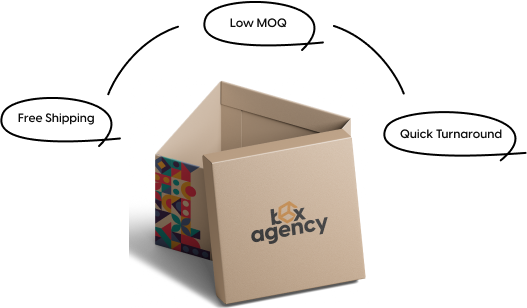Corrugated Flutes: Purpose, Types and Uses
Protective packaging plays an essential role in protecting products during shipping and storage. It helps avoid harm and guarantees that items reach their destination in the best possible condition. Packaging materials like corrugated boxes are especially valued for absorbing shocks and giving extra protection. One of the most important components of these boxes is the corrugated material which enhances their quality and durability.
Corrugated material comprises a combination of sheets of paperboard that are glued together. The wavy layer between the external and inward layers is known as the flute. The flute is what gives corrugated boxes their quality and makes them ideal for packaging. This structure gives both cushioning and back to the contents inside.
What are Corrugated Flutes?
Corrugated flutes are wavy layers of paper sandwiched between two flat sheets of linerboard. These flutes are what make corrugated sheets strong and lightweight. The flutes are made by passing a sheet of paper through a set of rollers that shape it into waves. These waves create air pockets that give cushioning to ensure items during transport. Flutes come in different sizes and shapes to meet different packaging needs.
What is the Main Purpose of Corrugated Flutes?
The main reason for corrugated flutes is to improve the structural integrity and strength of the packaging. The wavy layers make a cushion-like impact that makes a difference in absorbing shocks and impacts during transportation. This helps prevent harm to delicate things.
Flutes also include rigidity to the box making it less likely to twist or collapse under weight. Offering a combination of quality and flexible corrugated flutes guarantees that the content of the box stays secure all through the shipping process.
What are the Types of Corrugated Flutes?
Corrugated flutes come in different types based on their measure and shape. Each sort serves a specific reason depending on the thickness and quality needed for packaging.
A Flutes
A flute is the thickest corrugated flute accessible and measures around 5 millimeters or ¼ inch in thickness. This means that there are almost 36 flutes inside a single linear foot of packaging. They are commonly utilized in heavy-duty applications such as shipping large or delicate things. Their quality makes them perfect for items that require tall assurance amid transportation.
B Flutes
The B flute falls in the mid-range and measures about 3.2 millimeters or ⅛ inch in thickness. This means that there are almost 49 flutes inside a single linear foot of packaging. This flute sort is broadly utilized in boxes for retail packaging. B flutes provide great crush resistance while maintaining a direct padding impact.
C Flutes
The C is the second-thickest corrugated flute accessible and measures around 3.2 millimeters or 11/64 inches in thickness. This implies that there are approximately 41 flutes inside a single linear foot of packaging. C flutes are best for applications requiring direct padding and affect resistance.
E Flutes
The E flute is the second-thinnest corrugated flute and measures around 1.6 millimeters or 1/16 inch in thickness. This means that there are approximately 90 flutes inside a single direct foot of packaging. They offer minimal padding but are awesome for making packaging that requires a smooth and high-quality surface for printing.
F Flutes
The F flute is the thinnest corrugated flute accessible and measures around 0.8 millimeters or 1/32 inch in thickness. This implies that there are approximately 128 flutes inside a single straight foot of bundling. They are used for packaging lightweight and delicate items where protection is secondary to presentation.
What are the Uses of Corrugated Flutes Based on Their Thickness Levels?
The thickness of corrugated flutes specifically influences the type of packaging it is suitable for. Here is how different types of flutes are utilized:
Single Face Board
A single face board only has two layers with one layer of fluting and one layer of liner. This implies that it is not as durable as other board types since it is missing a second liner. In any case, this type of board is perfect for inner packaging components that include extra padding to the contents.
Single Wall Board
A single wall board is the foremost common board type used with one layer of fluting surrounded by two liners one on each side. This type of board is commonly used in shipping cartons because it gives adequate insulation and content protection.
Double Wall Board
A double wall board has five layers, three layers of liner surrounding two layers of fluting. This double wall is like two boxes in one. This implies that it is durable and is perfect for use with heavy industrial things.
Triple Wall Board
A triple wall board has seven layers with four layers of liner surrounding 3 layers of fluting. This board is like three boxes in one similar to the double wall. Triple-wall packaging is often utilized for shipping crated and chemical containers as the foremost durable board type available.
In Which Box Styles Can We Use Corrugated Flutes?
Corrugated flutes are flexible and can be used in a variety of box styles. Each type of box benefits from the padding and quality flutes offer:
Mailer Boxes
Mailer boxes are designed specifically for shipping and mailing to offer protection to items during travel. The corrugated flutes inside the box give cushioning to protect delicate things from impact. These boxes are commonly utilized for ecommerce shipments and guarantee that items reach clients in perfect condition.
One-Piece Folders
One-piece folders are perfect for storing and shipping books or artwork. The utilization of corrugated flutes includes rigidity that prevents bending or tearing of the contents. These boxes are commonly used in an office setting or for sending legal and important documents.
Full Overlap Boxes
Full overlap boxes feature flaps that completely cover the box giving an extra quality and security. The overlapping design improves stacking quality which makes these boxes exceedingly successful for shipping heavier items. They offer extra assurance against damage during handling and travel.
Corrugated Trays
Corrugated trays are planned to hold items securely during shipping and travel. The flutes in this plate give basic integrity that prevents items from shifting or being damaged. They are regularly used for food products, retail displays, or parts that need organization within larger shipments.
Folding Cartons
Folding cartons are flat boxes that fold into shapes that provide a compact and efficient packaging arrangement. The utilization of folded flutes guarantees durability that makes these cartons capable of dealing with heavy-weight items. They are commonly used for gadgets and packaged food products.
Why Use Corrugated Flutes?
Corrugated flutes are utilized because they give an efficient and cost-effective solution for packaging needs. They offer security against moisture and dust. The flutes moreover make the material lightweight which makes a difference in reducing shipping costs. By using fluted corrugated cardboard boxes companies can guarantee their products are secure and secure during storage and travel.
Are Corrugated Flutes Eco-Friendly or Harmful to the Environment?
Corrugated flutes are generally considered eco-friendly. They are made from paperboard which is a renewable asset. Many corrugated boxes are recyclable and biodegradable making them a sustainable option for packaging. It is important to ensure that the material is recyclable to minimize its environmental impact.
Can We Print on Boxes Made from Corrugated Flutes?
Yes, corrugated boxes made from flutes can be printed on. The surface of corrugated material gives a great base for printing logo designs and other marketing information. This makes it a great choice for businesses looking to brand their items while ensuring they are protected.
Where To Get Customized Corrugated Boxes?
Customized corrugated boxes can be ordered from packaging providers. These providers offer a run of options where businesses can specify the size, flute sort, and design of their boxes. Box Agency provides printing services so that businesses can customize their boxes with logos or other data.




